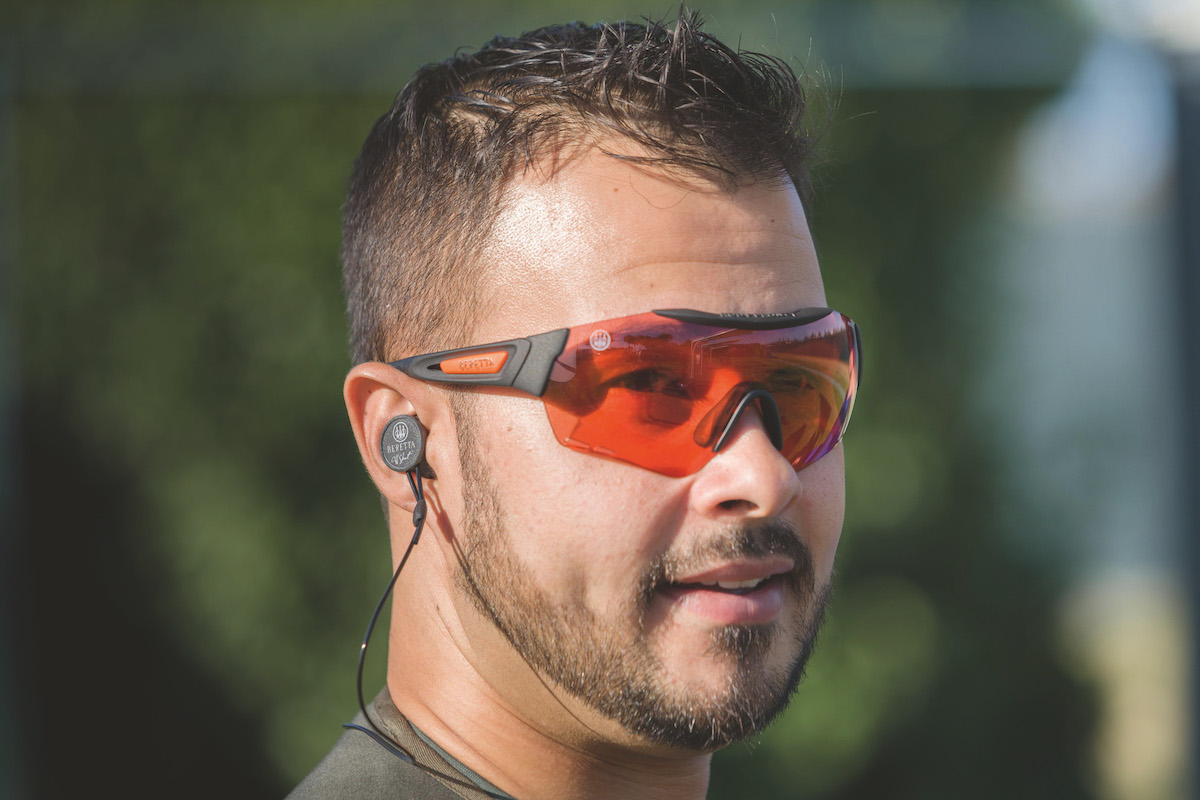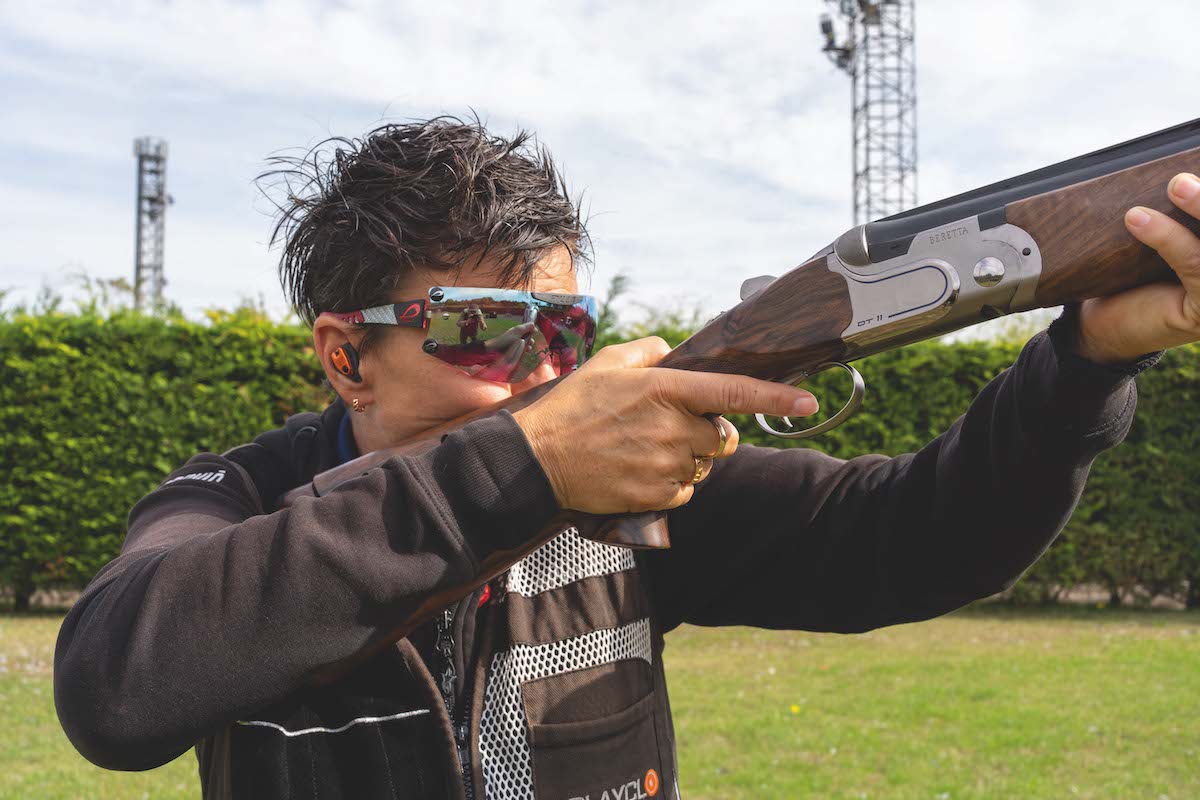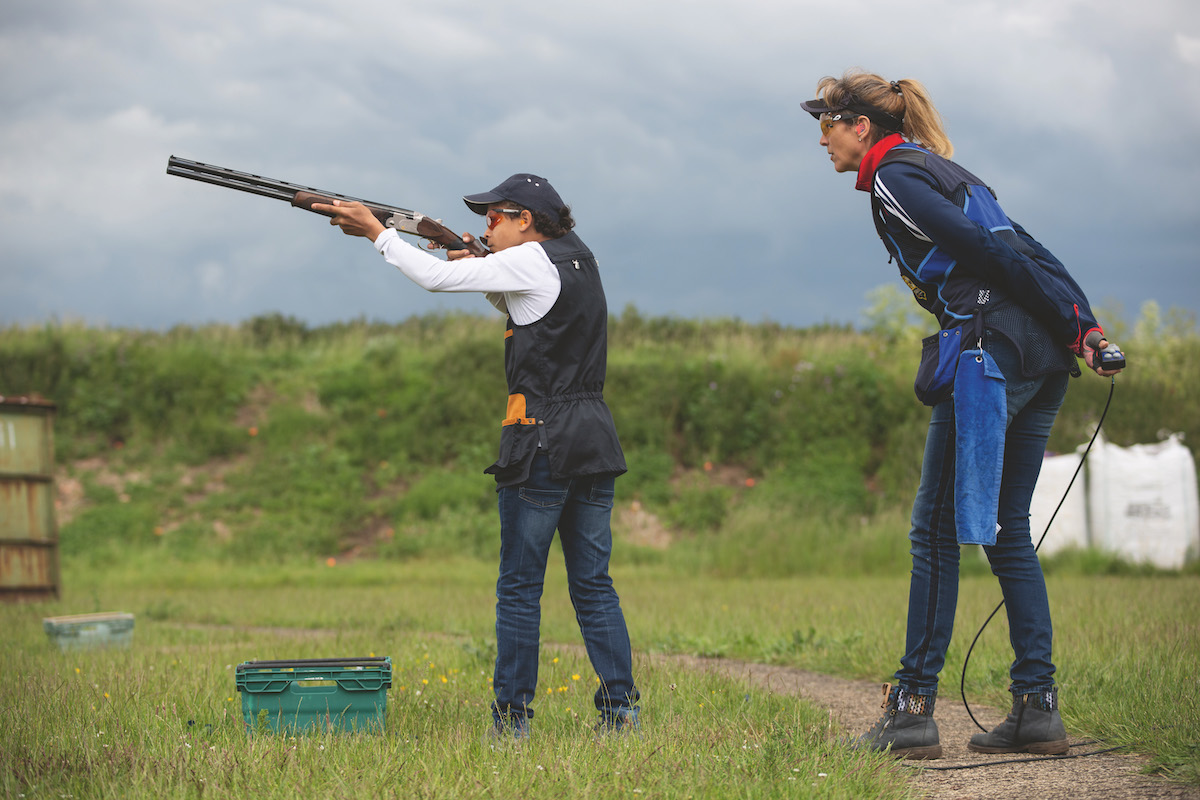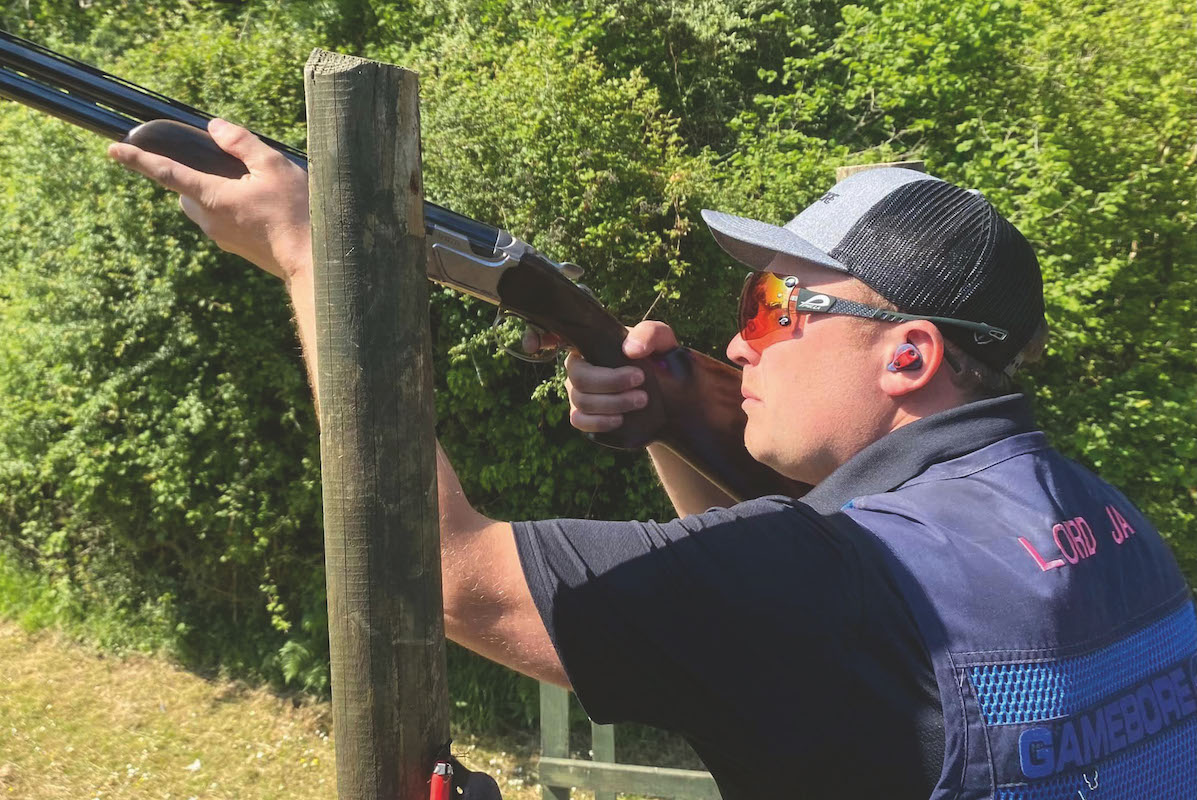Clay shooting safely: here’s the kit you must have
The importance of personal protective equipment cannot be understated, so Jasper Fellows breaks down some of the basics

Whether beginner or Olympian, eye and ear protection is vital
We should all be proud of the fact that there have been no recorded firearms related fatalities on British shooting grounds for more than 30 years. But don’t let this lull you a false sense of security. Even the best-aimed shots can still cause permanent injuries to eyes and ears. Thankfully it’s never been easier, or cheaper, to stay safe on the stands and go clay shooting safely. (Read more on what to wear clay shooting.)
Eyes
I bet anyone who’s suffered the excruciating pain of a fast-moving clay shard making contact with their eyeball, or has been diagnosed with cataracts as a result of too much UV exposure, wishes they’d worn eye protection. When it comes to eyesight, hindsight won’t help – foresight is what’s needed.
It’s not uncommon for shooters and spectators alike to be struck by an errant clay fragment; usually it’s just a light dusting or a few fragments of clay coming back for revenge. No matter the size of the shrapnel, one of the last places you want it is in your eyes.
Exposure to sunlight, more specifically UV radiation, is another commonly overlooked hazard that’s especially pertinent to shooters because we spend a lot of time staring skywards searching for elusive targets.
Casting shade
A two-stage approach to vision protection is best. A solid pair of good shooting glasses and a peaked hat are key. It may seem near impossible for a clay fragment to fly between the gaps of the glasses and into your eye, but is that a gamble you are willing to take?
Thankfully, any cap will do and most clay grounds sell branded caps at reception, so you can support your local ground while staying safe. Shooting glasses are more complicated, but understanding the basics will help you protect your vision and perhaps even boost your scores. (Read our article on the best clay shooting caps .)
Impact protection
One must be extremely careful when selecting suitable specs for shooting. Your prescription glasses or driving sunnies may seem like an obvious solution, but unless they are specifically designed with impact protection in mind, they could shatter and cause even more damage than if you had gone without.
Polycarbonate or trivex lenses are a must. Originally developed for aeronautic applications, these materials offer extreme durability, shatter-resistance and UV protection in a lightweight package.
When looking to make a purchase, look for EN166 or ANSI 787 certification. Glasses marked as such will have passed intensive tests conducted by the EU or USA to ensure strong impact protection.
A look at lenses
Once you’ve narrowed your search down to suitably certified glasses, there’s still a dazzling array of options available, with a huge number of brands offering a vast range of frame and lens options.
Frame choice is relatively simple. One should look for minimalist frames that allow for an uninterrupted sight plane, yet also feel comfortable and secure to wear. Recoil will knock your head back and you don’t want to readjust your specs with every shot.
Colour correction
There’s more to picking a lens colour than coordinating your outfit. Choosing the right lens for the right target can make all the difference, particularly as the light changes throughout a day on the stands. While debate always rages as to which lens is the right choice for the moment, the following basic rules can be followed.
Grey
These fulfil the same function as your classic sunglasses and cut light across the entire visible spectrum. They should be your go-to lens option for sunny day shooting.
Orange
An orange lens will help block blue light, allowing for greater contrast on hazy, cloudy days. They will also help highlight orange ‘blaze’ clays against a green background.
Brown
Brown tints also work well for blocking out blue light, therefore they will help to boost contrast when shooting against a grey or cloudy background, or during variable light conditions as the day turns to dusk.
Yellow
Ideal for dark, overcast days. A yellow lens will help boost the contrast of a black clay against a darker sky. Though they will do very little to eliminate sunlight, making them ideal British shooting.
Purple
A background neutraliser, purple lenses dull green and brown shades, enabling better target acquisition against natural backdrops. Purple lenses work well in all light conditions so are a great choice for game and clay shots alike.
Clear
A lack of light is no excuse for poor eye protection. Clear lenses are great for woodland or evening shooting and are ideal for spectators who want to stay protected while watching the action.
Photochromatic
Also known as adaptive lenses, these will darken when exposed to enough UV light, meaning you won’t have to switch out lenses as the light conditions change throughout the day.
Prescribed safety
As we’ve mentioned, your prescription glasses are probably not up to scratch when it comes to impact protection. Thankfully, there are plenty of options available to those who require some optical assistance.
Safety over-glasses are the simplest option to consider. As the name suggests, they are worn on top of your usual specs to provide a layer of ballistic protection. They are usually very reasonably priced but can be bulky.
Lens insert glasses allows the wearer to insert their own prescription lenses behind a protective outer layer. While you will need to purchase the prescription inserts separately, they can be slotted in and out with ease, so you can switch colours on the fly.
Direct glaze prescription lenses are the way to go if you have the money to spend. Here, your prescription is glazed directly on to the safety lens, so you won’t have to fiddle with inserts or worry about bulk. However, you will have to pay for multiple direct glaze glasses if you want a variety of colour options.
Final thoughts
Remember, you can still be hit by clay fragments when you aren’t shooting. Ensure you don your safety specs and cap every time you visit your local ground and keep them on until you are back in the safety of the clubhouse. You can pick up a basic set of protective eyewear for as little as £5, so there really is no excuse for not staying safe.

Professionals should consider investing in a bespoke pair of quality ear plugs, like the ProFlex range from CENS Digital
Ears
When fired, a 12-bore shotgun produces around 150 decibels (dB) of sound pressure. Sure, we all know shotguns are loud, but most don’t realise that exposure to sound pressure levels above 140dB can cause instant and irreversible damage to the sensory hairs of the inner ear.
Put simply, one pull of the trigger without adequate protection can cause permanent hearing damage. (Read more on hearing damage caused by shooting here.)

Classic foam ear plugs are very cheap and they do work, but regular shooters should consider upgrading
Buds, plugs or phones?
Classic disposable in-ear foam plugs offer the simplest, and cheapest, solution. They can be purchased by the thousand and are often given out for free at shooting grounds to visitors and have-a-go shooters.
However, according to 3M, one of the world’s largest manufacturers of foam ear plugs, a foam plug is only going to give you a mean attenuation level – that’s the number of decibels the protection will reduce the sound level by – of 20 to 30db. So, they will bring that instantly damaging 150db down to about 120db. While that may protect you from instantaneous hearing loss, the NHS advises against spending any longer than 30 seconds in an environment of 115db.
Foam plugs can also be uncomfortable and difficult to fit properly. An ill-fitting plug will be essentially useless, and discomfort will lead to distraction on the stands.
Over-ear defenders may be a better choice for regular shooters. They are much easier to fit, can be used time and again and often include bonus features like Bluetooth connectivity and active noise cancellation. They’re a more protective way of clay shooting safely.
However, an over-ear pair can get in the way of your shooting glasses and affect cheek weld.

Fully bespoke, fitted ear plugs, like the ProFlex DX5 range from CENS Digital, are packed fulll of features and have a price point to match
Bespoke fitted earplugs offer the best of both worlds, for those with deep pockets. A mould is taken of the user’s ear, from which a perfectly fitted plug is created. This helps alleviate the comfort and fitting issues of classic foam plugs, while offering a far slimmer form factor than ear defenders.

A vasty array of manufacturers produce quality protection
Thanks to the explosion in popularity of wireless headphones, bespoke fitted plugs now offer features you’d more likely associate with flashy tech brands such as Apple and Samsung. Multi-band Bluetooth connectivity, active noise cancellation, wind noise reduction and more are all being touted by the top brands.
But don’t be fooled by the price increase, while your fancy new fitted plugs may wirelessly connect you to the world, they will still only offer a mean attenuation level of around 30dB.
So do what the pros do, and double up. Wear both ear plugs, foam or otherwise, and a set of good ear defenders. This won’t double your protection, but it will increase it.

More advanced headsets offer everything from Bluetooth connectivity to active noise cancellation
Stay safe
British shooters look out for each other and are always quick to call out unsafe firearms handling practices; it’s what makes our sport so safe. Next time you are on the range and see your friends ‘forgetting’ to don their eye or ear protection, call them out. It might be awkward for a second, but a second of awkwardness is better than a lifetime of regret. So always go clay shooting safely.














